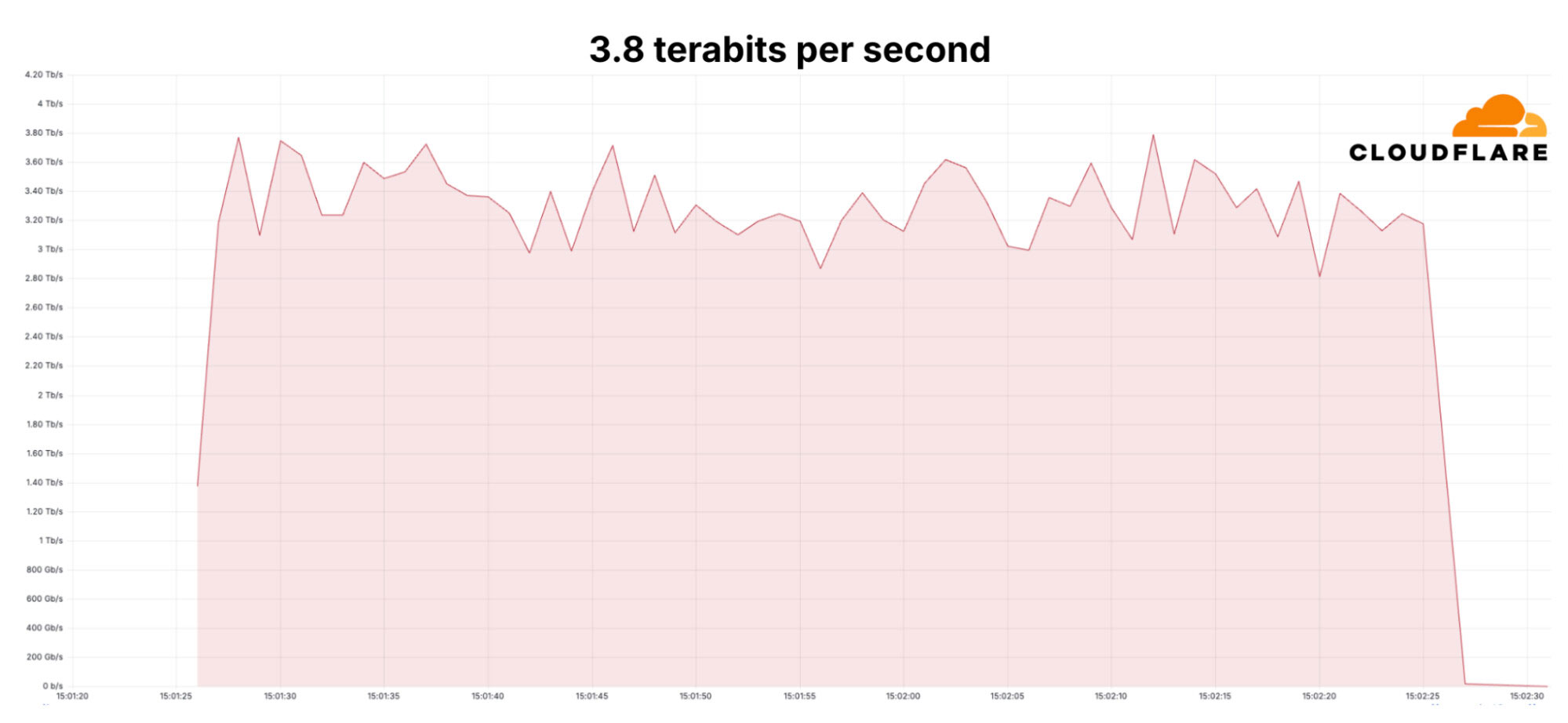Cloudflare Withstands Record-Breaking 3.8 Tbps DDoS Attack With Automated Protection
The world's leading cloud cybersecurity firm revealed that the massive DDoS attack was part of a larger campaign that spanned a month earlier, involving "hyper-massive L3/4 DDoS attacks" with traffic volumes exceeding 2 billion packets per second (Bpps) and 3 Tbps. Layer 3 (L3) attacks are designed to overload network infrastructure by 'flooding' the target system with a large volume of packets. While Layer 4 (L4) attacks are designed to exhaust the resources of the transport layer by overloading it with connection requests or data packets.
Because Cloudflare's DDoS defenses handle DDoS attacks automatically, it also means that the company's customers can be protected in real time. This includes HTTP reverse proxy services like Cloudflare WAF and Cloudflare CDN, as well as customers using Spectrum and Magic Transit. All are protected automatically.
One of the attack's graphs released by Cloudflare shows the duration and intensity of the attack. The incident began at approximately 15:01:25 and was mitigated at 15:02:30, allowing the target to resume normal operations very quickly.

Cloudflare warns that large-scale attacks of this type can take down unprotected internet assets, as well as those protected by on-premises equipment or cloud providers that cannot absorb DDoS campaigns of such magnitude.
Attacks like this have been detected by Cloudflare primarily affecting a number of the company's customers across a range of industries including financial services, internet and telecommunications. The countries hosting the most bots include Vietnam, Russia, Brazil, Spain and the United States.
All types of devices can be exploited for attacks including MikroTik devices, DVRs, and web servers. Experts believe the attacks originated from a large number of ASUS home routers exploiting a vulnerability recently discovered by Censys.
You should read it
- What is DDoS? How to limit and prevent DDoS attacks
- Cloudflare provides tools to reduce the effects of free DDoS attacks
- What is DDoS Extortion attack?
- What is Volumetric DDoS Attack?
- Prepare the total force to respond to DDoS attacks in 2014
- 5 Things You Didn't Know About DDoS attacks
- How many DDoS cases are reported in 2019?
- Yandex suffered the largest DDoS attack in history
- What is botnet DDoS?
- Warning the emergence of ransomware DDoS attack, the scale can be up to 800Gbps
- What are DoS and DDoS denial of service attacks? What are their harmful effects?
- DDoS is ranked as the top threat for businesses in 2018
Maybe you are interested
How to fix STOP error 0x0000008E Samsung's unnamed director stated the company's biggest goal is to defeat Apple How to use LastPass to manage passwords professionally How to change the color and size of the mouse pointer on Windows 10 Super lovely wallpaper about the bow: Scorpion, Than Nong, Thien Yet and Thien Hat What is AngularJS?
